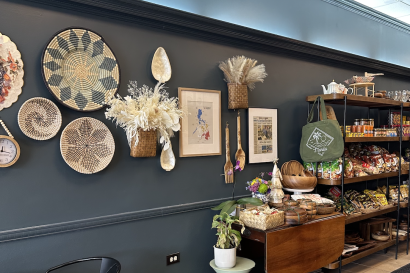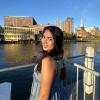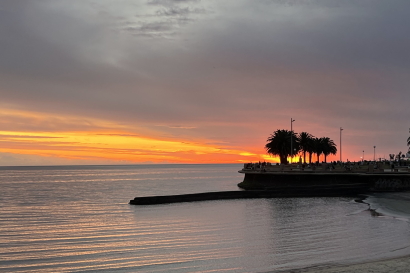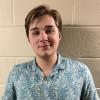
Monday morning after breakfast, I convinced my American host sister to come with me to a yoga class (the Buenos Aires-Santiago Emerging Economies students come to Santiago for the last six weeks of their program, and several were placed with our host families). We walked along quiet side streets in the now-chilly morning air to a yoga studio about a mile from our apartment. Although it was located in a strip-mall style building next to the tall glass office buildings that line the Apoquindo, the interior was peaceful, with doors leading out to a small garden. The class began with meditation.
“Cierren los ojos… Inhala… Exhala…” The teacher guided us. My mind immediately went to a recent unit in my medical Spanish class, el chequeo medico (the medical examination). In the class, we had been reviewing typical doctor-patient dialogue, for example, role playing a pediatrician and a patient, or a receptionist and a prospective patient trying to schedule an appointment. The imperative tense showed up constantly when telling a patient to relax, roll up their sleeves, inhale, etc. We practiced switching between the tú and usted forms depending on who we were addressing and discussed colloquial versus medical terminology for symptoms and diagnoses.
Despite it being hard to make myself study while in another country, I’m motivated to memorize the vocabulary for medical Spanish by the excitement I feel when I’m in my weekly hospital rotation and a nurse describes a patient with ictericia (jaundice) or a surgeon explains the use of a particular bisturí (scalpel) and I understand. Much of the medical vocabulary is similar to English, and I find myself almost forgetting the English words—a nurse in ophthalmology asked me the English translation of the specialty once, and I froze for a good 30 seconds, my brain stuck on the Spanish oftalmología!
I now have three bodies of anatomical vocabulary in Spanish (the body parts, the skeleton, and the organs), and I’ve been surprised at how useful these words have been even outside of a medical setting. The couple yoga classes I have been to have helped to reinforce my Spanish anatomy—lift your pelvis, lower your shoulders, turn your right heel out. Similarly, I take a weekly salsa class at the Universidad Católica, and hearing the teacher correct placement of arms and legs or call out directions while we are dancing has undoubtedly improved my ability to comprehend and adjust while multitasking.
Last week in salsa, my partner turned to me as a song ended. “You’re enjoying this class?”
“Yes!” I responded. “It’s so fun.”
“Obviously,” he laughed. “You’ve had a smile on your face the entire time.”
In addition to the content I’m learning here in Santiago, from salsa moves to public health considerations, I truly do enjoy the added dimension of learning in another language. Who knew yoga, Latin dance, and anatomy had so much vocabulary in common!

Thea Lance
<p class="MsoBodyText" style="margin-top:.4pt; margin-right:20.75pt; margin-bottom:.0001pt; margin-left:5.5pt"><span style="line-height:103%">I'm a lover of adventure, whether that's climbing mountains or exploring a new city. This has taken me from my hometown in North Carolina to the arctic circle and beyond, and most recently to Chile! I'm majoring in Biology on a pre-medical track, and I am thrilled to be learning medical Spanish in Santiago this semester.</span></p>








